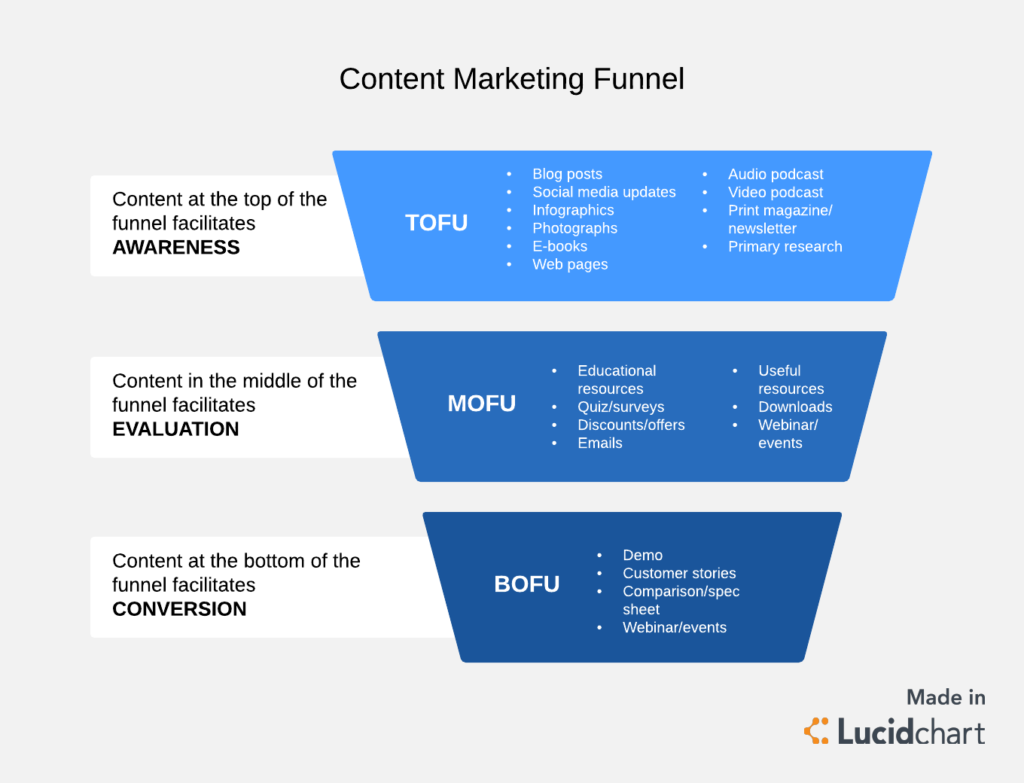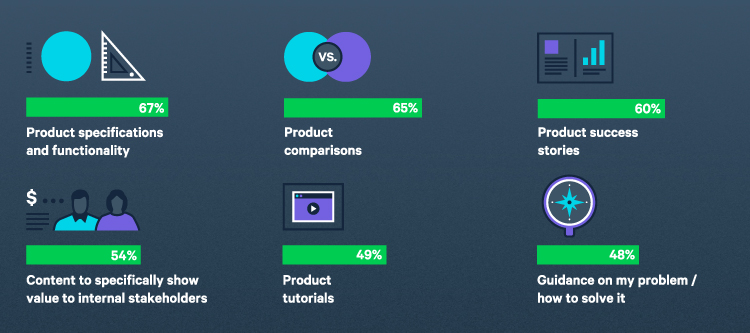Your B2B blog can do far more than increase traffic to your website and landing pages. When you create the right content, it can become part of a sustainable acquisition strategy for your sales team.
As HubSpot explains: “A content marketing strategy adds valuable information and informs the consumer—which is precisely what B2B customers are looking for. Not to mention, it supports SEO efforts, which involves anticipating what your audience is searching for, helping them discover your website and content, and potentially converting them to customers.”
Use the following tactics to transform your B2B blog into a tool that supports your sales teams, giving them the resources for both lead gen and conversion.
Keep Reading: 20 B2B Marketing Tools for Creating, Sharing and Measuring Content
Create Content For Every Stage
Your B2B blog can be used as a tool in each stage of the funnel if you create specifically-tailored content that not only helps you target all of your prospects but as a bonus, leaves you with a robust blog full of diverse posts. Ryne Higgins, a marketer at Peacock Alley, explains to SnapApp why writing content that thoroughly covers each phase of the sales funnel matters:
“From awareness, through consideration, intent, and decision, these prospects are looking for different pieces of information in your content. Potential prospects that have no previous knowledge of your business need basic information and descriptions of your products and services. After that, prospects often will look at reviews and case studies.”
Break down your funnel and your potential client needs at each stage to start creating targeted content. Start here:

Consider New Content Formats
You don’t have to stick to the same article format for your B2B blog. In fact, FocusVision found that B2B decision-makers are looking at a wide range of content pieces throughout the shopping and buying process, including vendor videos and analyst reviews. They also found that certain types of content are more valuable than others for making a purchasing decision:

As you figure out what your buyers want to consume, here are some pieces of content to consider investing in creating for your B2B blog:
- Research reports: Provide hard data to your target audience via informative research reports.
- Case studies: Show the success you’ve had with previous clients with quantifiable and measurable results. Prospects will see that you don’t just talk the talk but have the experience to back it up.
- Industry-related surveys: Brainstorm topics related to your vertical and run a survey; this lets you offer a unique point-of-view as an industry expert. (Check out #2 on the above JTC blog post for detailed instructions on how to do this). A survey can serve as the basis of multiple content pieces.
Read More: 5 Ways to Use Data to Improve Your B2B Content Strategy
Leverage Your Internal Resources
When brainstorming topics that support sales, don’t forget that you have valuable internal resources at your fingertips already: your sales and customer service teams. Turn to these teams to understand common questions, concerns and topics that your ideal clients care about.
Sales Team
A recent CMI report found that 74 percent of B2B content marketers use sales team feedback to research and reach their target audience. Ask them what they need to help their process and survey or poll the team on topics that often come up in sales calls—use those topics to inform your B2B blog strategy and don’t forget to keep SEO and keyword research in mind to ensure your content not only supports sales but also helps you rank for related terms.
Download: Free Keyword Research Guide
Customer Service Team
Your customer service team has insight into common inquiries, pain points, and roadblocks that your existing customers face. All of these can translate into informative and actionable pieces of content for your B2B blog. As I explain in my guide for Zendesk:
“If you consistently see a loss in retention at X touchpoint or for Y reason, consider what helpful, high-value content might influence customers to stay or come back.” If you have a support ticket system, mine that as well for common questions.
Make Content Available to the Sales Team
Once you’ve created the content, your sales team needs to have access to it. While this may seem obvious, Jessica Mehring, CEO of Horizon Peak Consulting, confirms that she sees this disconnect with her clients. She explains to Business2Community:
“Sometimes, it turns out that marketing has exactly the content that sales needs, but the two departments aren’t communicating well enough … so sales just didn’t know that.”
Here is what Mehring suggests as a simple solution to bridge the gap: “Create a system for tracking what content is available. A content catalog, if you will. A simple spreadsheet can work for this, or you can use a more robust tool like Airtable or a content management app.”
Educate Your Sales Team
In addition to making the content available to your sales team, you need to educate them on how to use that content to turn leads into customers. For example:
- Personally send relevant content to leads via email. “I know we were talking about this the other day and I thought you’d find it helpful…”
- Share during a call. “Let’s take a look at this case study together…”
- Send as part of an automated email flow after a lead enters the funnel, I.E. after submitting a contact form or downloading a freebie.
This will be specific to your customer, industry, and content, so dial in on what methods are best for your business and empower your sales team to leverage that content.
Deliver Results with Your B2B Blog
Your B2B blog can be one of your most powerful sales tools when done correctly, from content creation to cross-departmental alignment and sales support. Use these ideas to start creating content that educates, supports, and converts.



